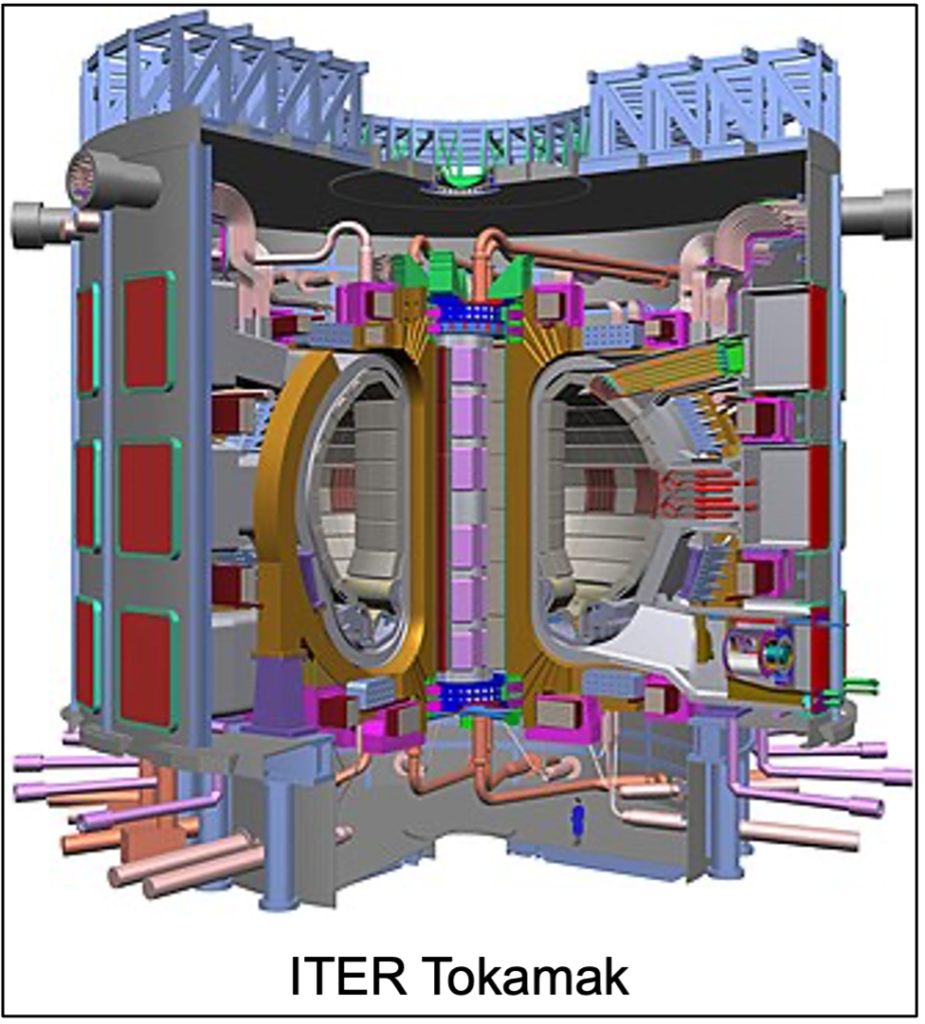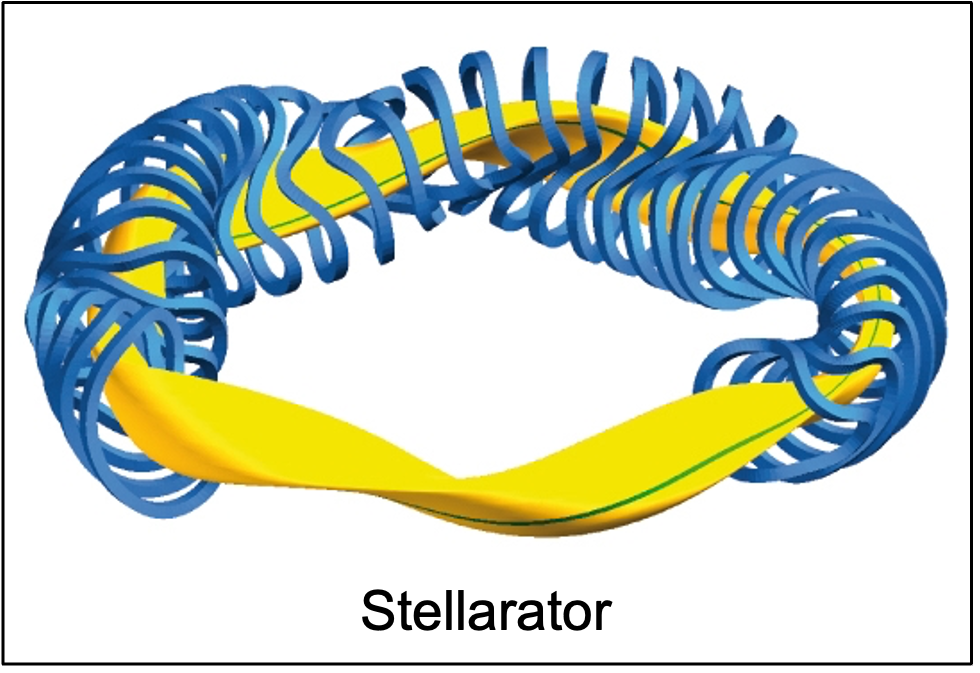What is Magnetic Confinement Fusion?
Perhaps one of the oldest approaches to fusion is magnetic confinement. Magnetic containment utilizes very strong magnetic fields to compress a highly heated hydrogen plasma within a high-vacuum container to reach fusion. While the tokamak (pictured at the right) is the most common technology utilized for magnetic confinement fusion, it is not the only option; the stellarator and magnetic mirror both predate the tokamak. However, the tokamak has several advantages over other magnetic confinement approaches; it is now the most focused-on approach for magnetic confinement. Widely-known examples of tokamaks include the International Thermonuclear Experimental Reactor(ITER), the Joint European Torus (JET), the Korea Superconducting Tokamak Advanced Research (KSTAR), and Experimental Advanced Superconducting Tokamak (EAST).
Most tokamaks have a symmetric torus in which the plasma is heated through magnetic compression. While toruses with a D-shaped profiles are the most common (you can see this shape in the ITER Tokamak above). Other approaches, such as the spherical tokamak (more like a donut), are also under
consideration. The other challenges with tokamaks (and magnetic confinement in general) are:
- Building the high-power magnets, usually using high-temperature superconductor (HTS)
tapes or wire; note that “high-temperature” is somewhat of a misnomer as these still must be
cryogenically cooled. - Heating the incoming plasma, usually through radio-frequency heating via gyrotrons or neutral-beam injection of high-power ions.
- Harvesting the high-energy neutrons as heat, typically through a thermal blanket containing liquid metals or salts, including lithium (to produce more tritium).
Most of the fusion machines being built in private industry today are tokamaks. Some of these include the tokamaks from the following companies (this is not an exhaustive list):
- ST-25 and ST40 at Tokamak Energy, Ltd. In Oxford, UK (both are spherical tokamaks);
- SPARC and VIPER tokamaks at Commonwealth Fusion Systems, an MIT spinoff;
- DIII-D National Fusion Facility at General Atomics, Inc.
One of the private or public reactors above is expected to reach “triple-point” conditions (temperature in excess of 100 million degrees; density created by a magnetic field 10,000 times stronger than the Earth’s field, and adequate confinement time) before the end of this decade.



